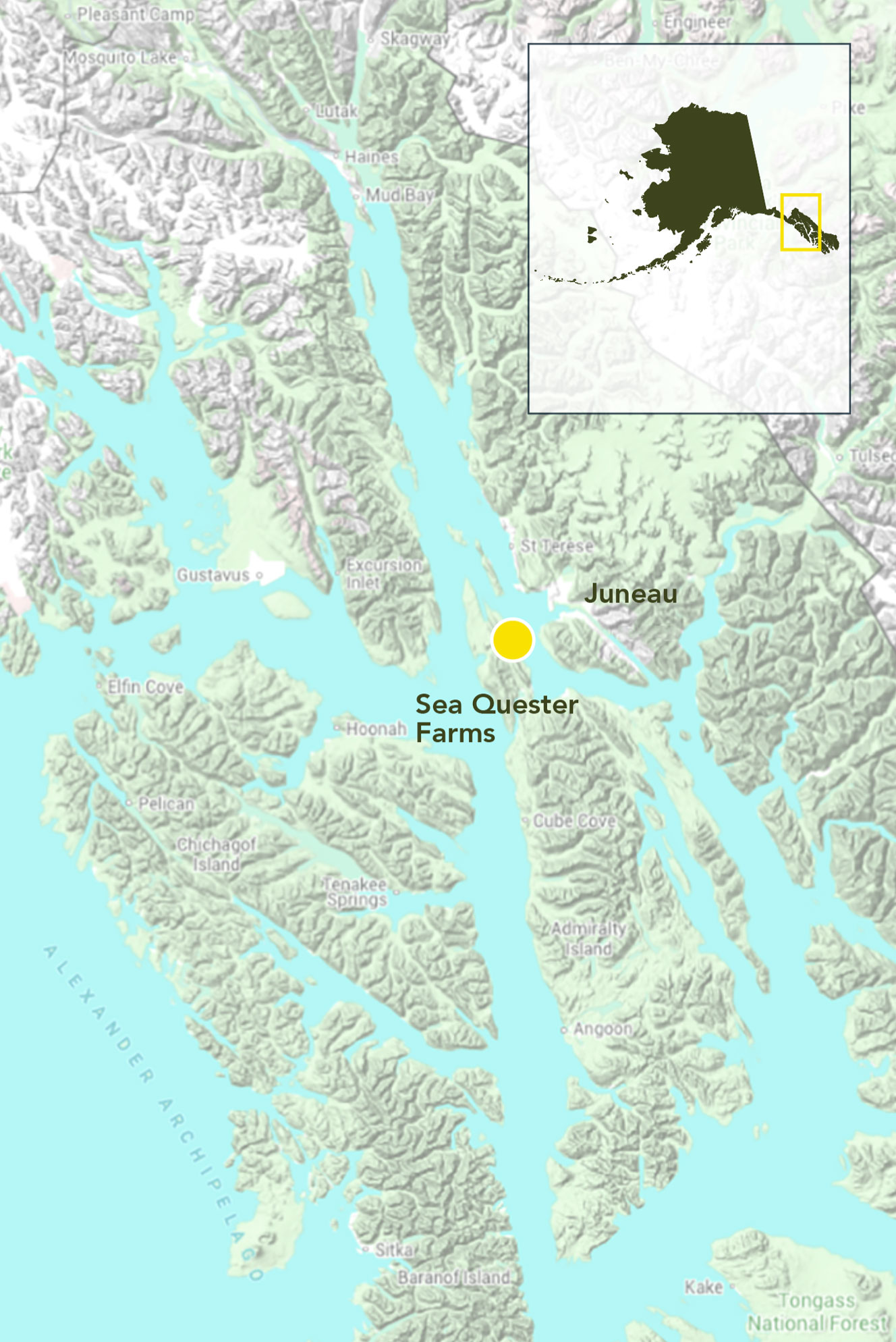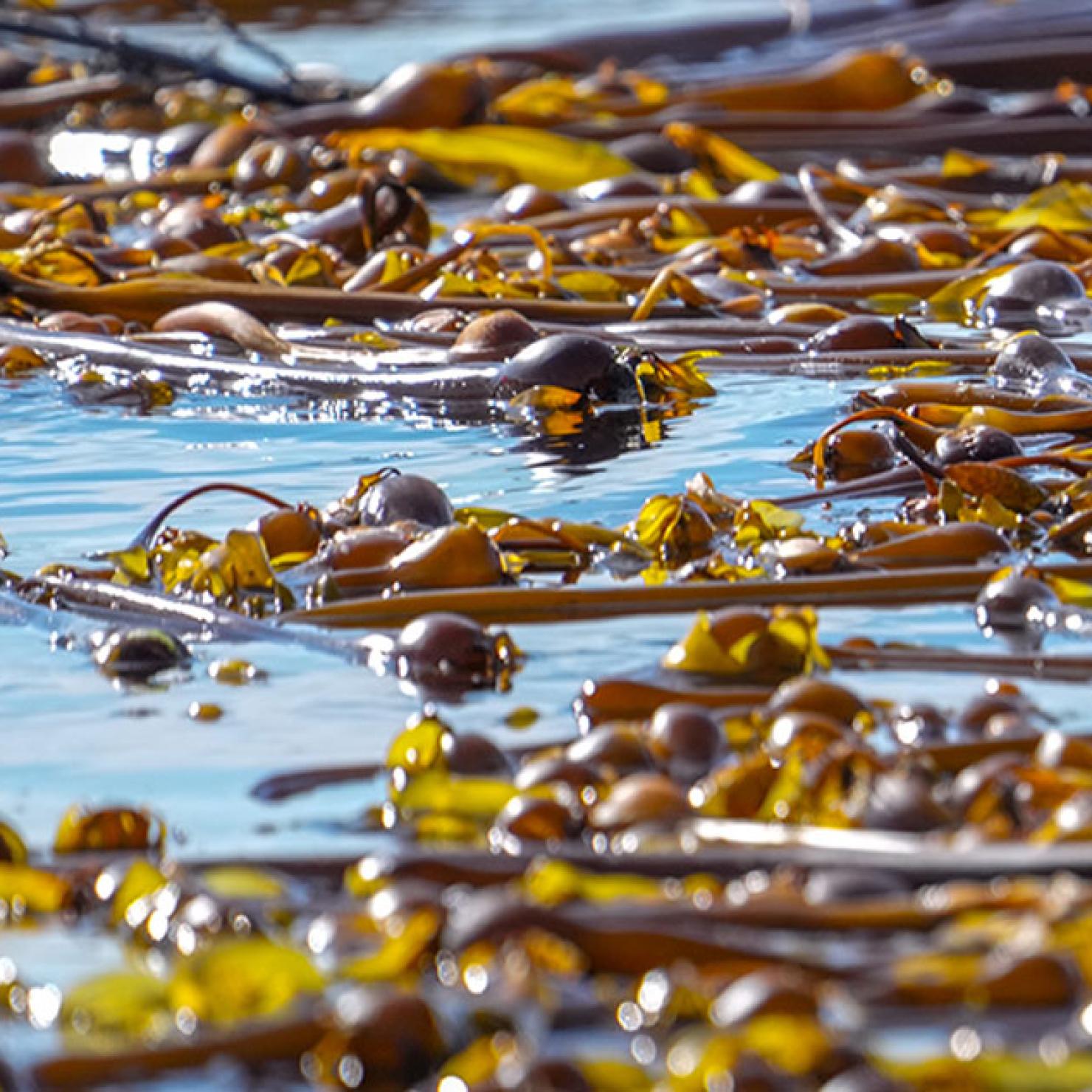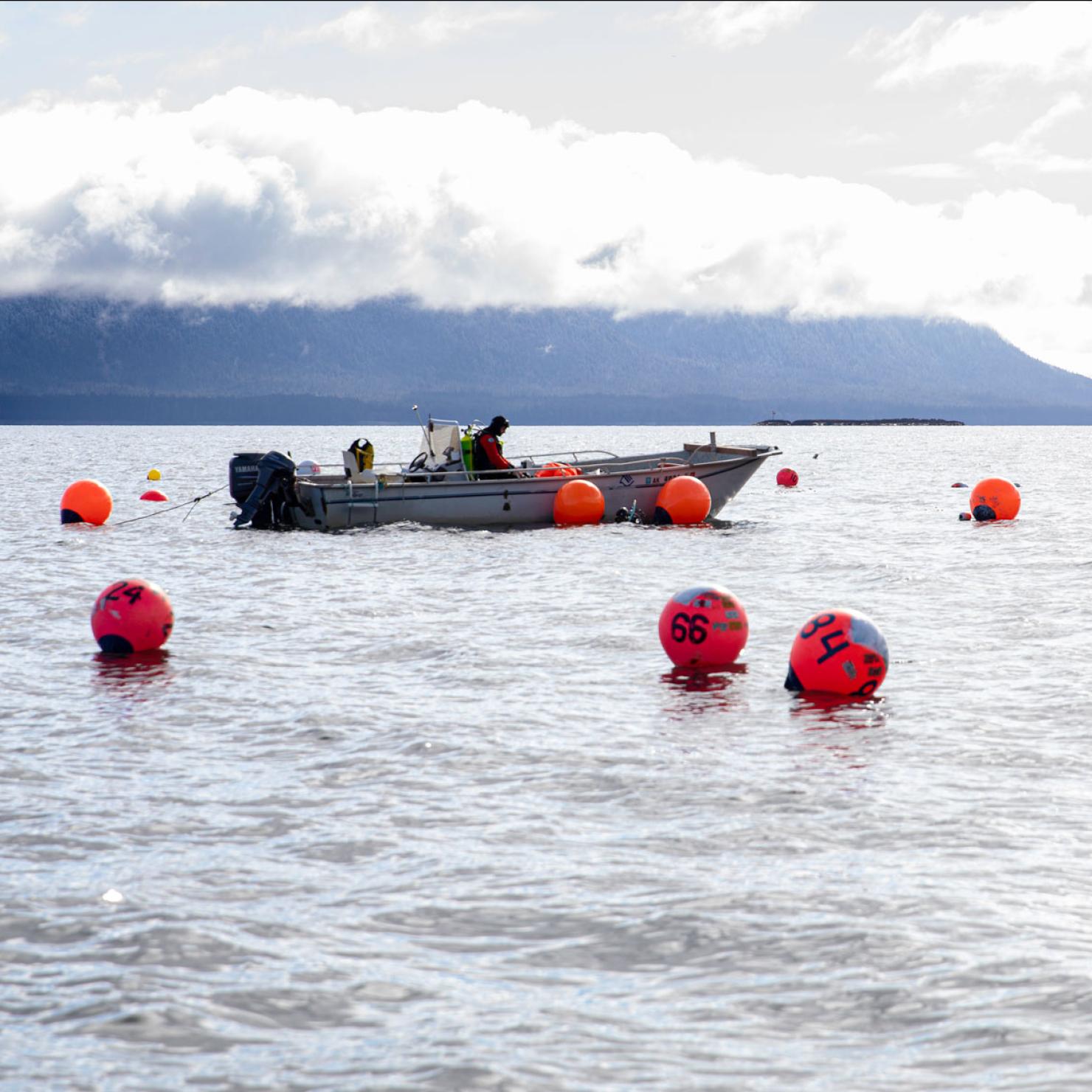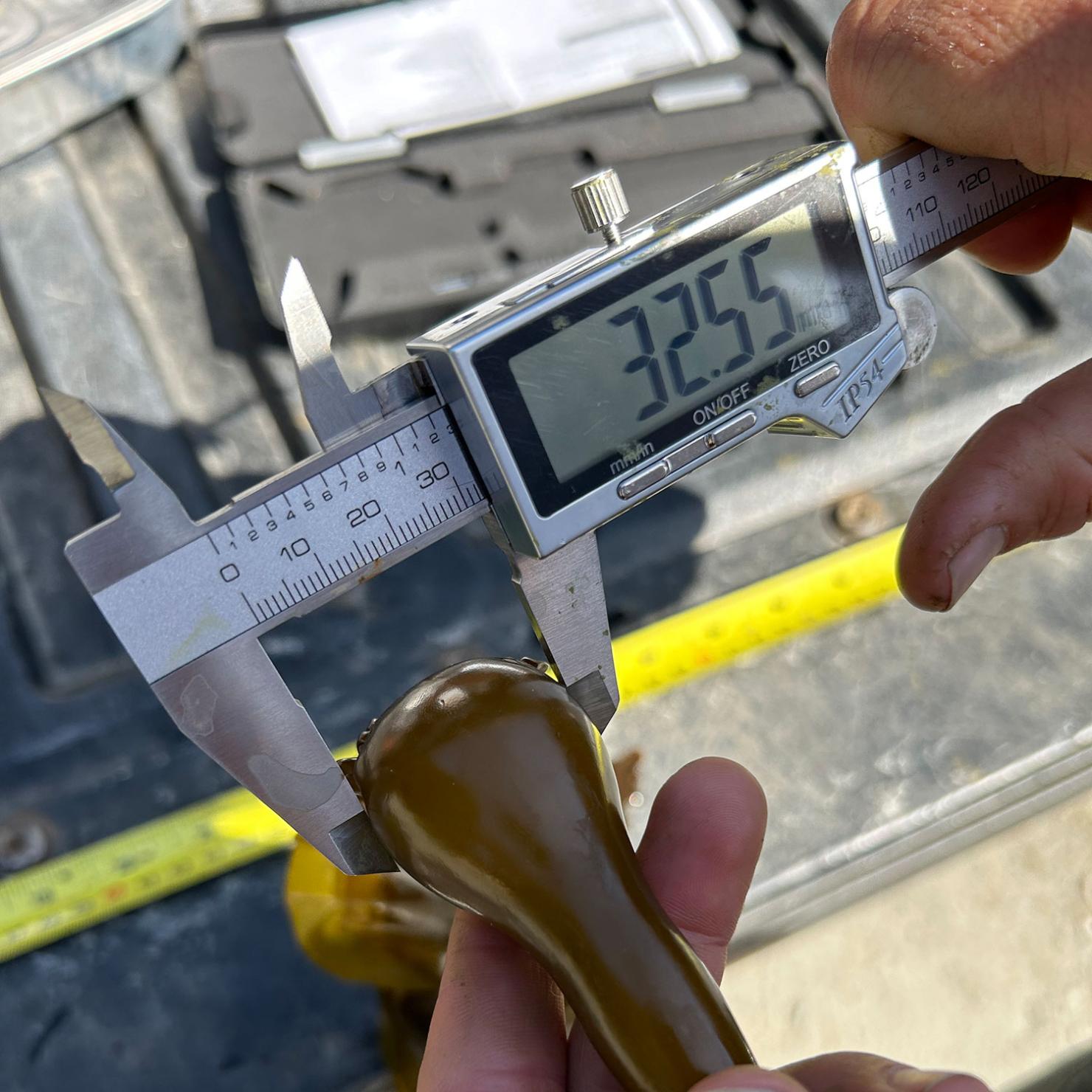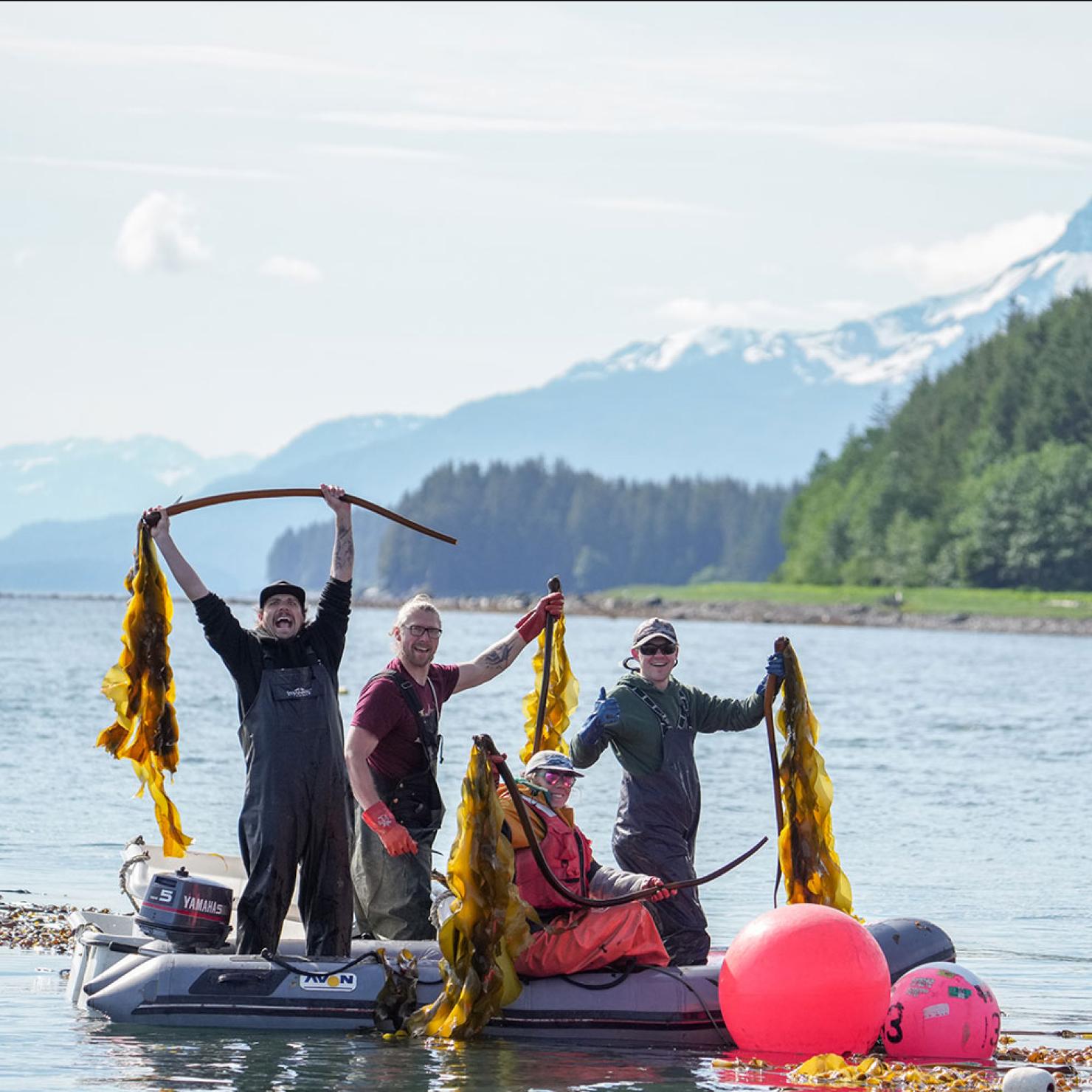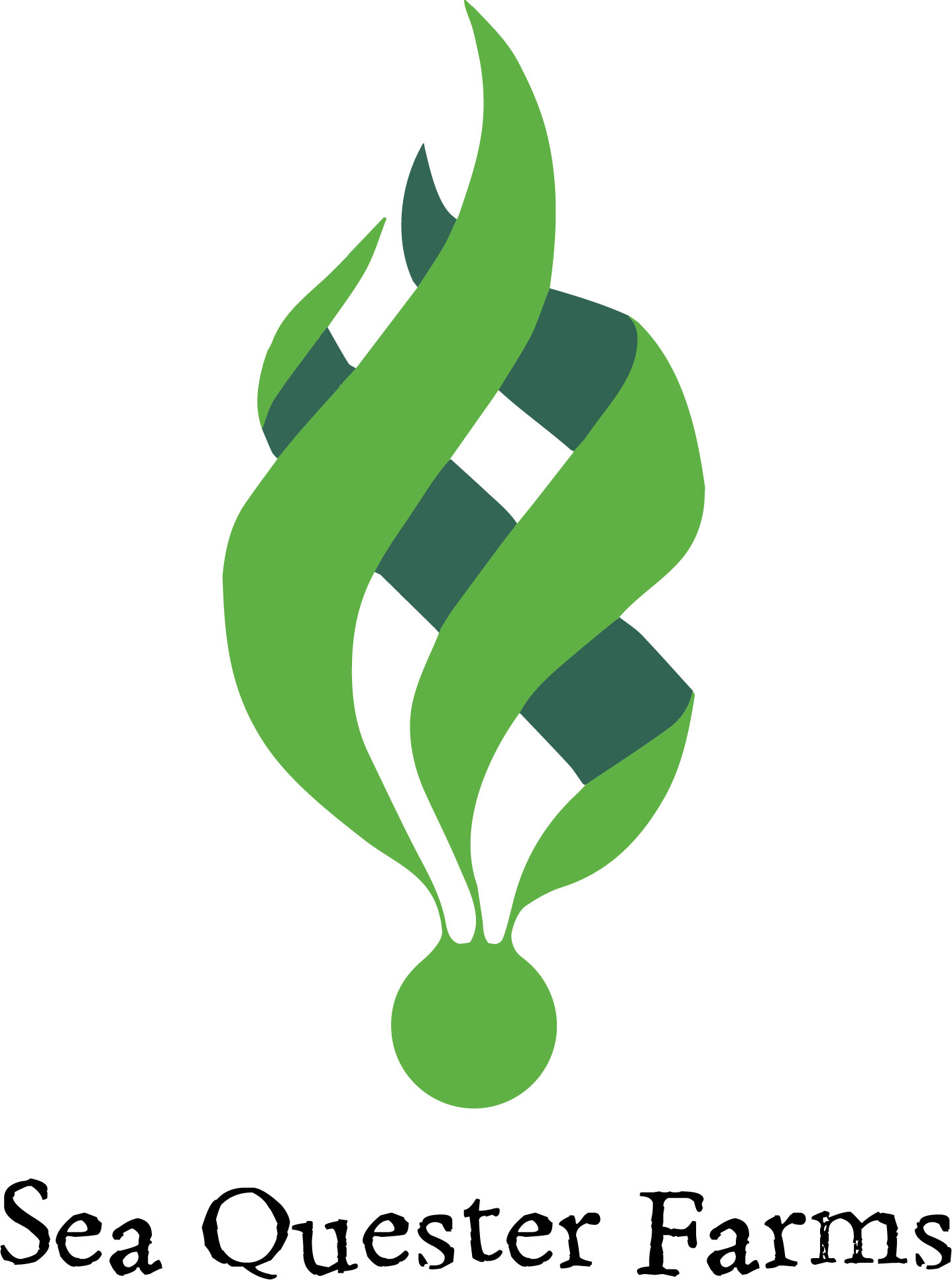Project Overview
Sea Quester Farms was established in 2022 to experiment with different techniques of growing bull kelp in Southeast Alaska. They are working in tandem with Barnacle Foods, a producer of sauces, relish, and pickle, made from wild, mature bull kelp harvested from the healthy beds near Juneau. As Barnacle Foods’ products have gained traction in the marketplace, and as ocean stewards intent on understanding the organism their products depend on, they encouraged Sea Quester Farm to explore techniques for growing bull kelp by guaranteeing their harvest a market.
Most efforts to farm bull kelp have produced skinny, short bull kelp nothing like what grows in the wild. So Sea Quester’s task is unique: to grow bull kelp to Barnacles’ size specifications by mimicking how it grows in the wild. Southeast Alaska has some of the best conditions for bull kelp anywhere along its range and generally, the wild beds are healthy and continue to produce the large, mature bull kelp with the inch-plus diameter stipe needed by Barnacles foods.




